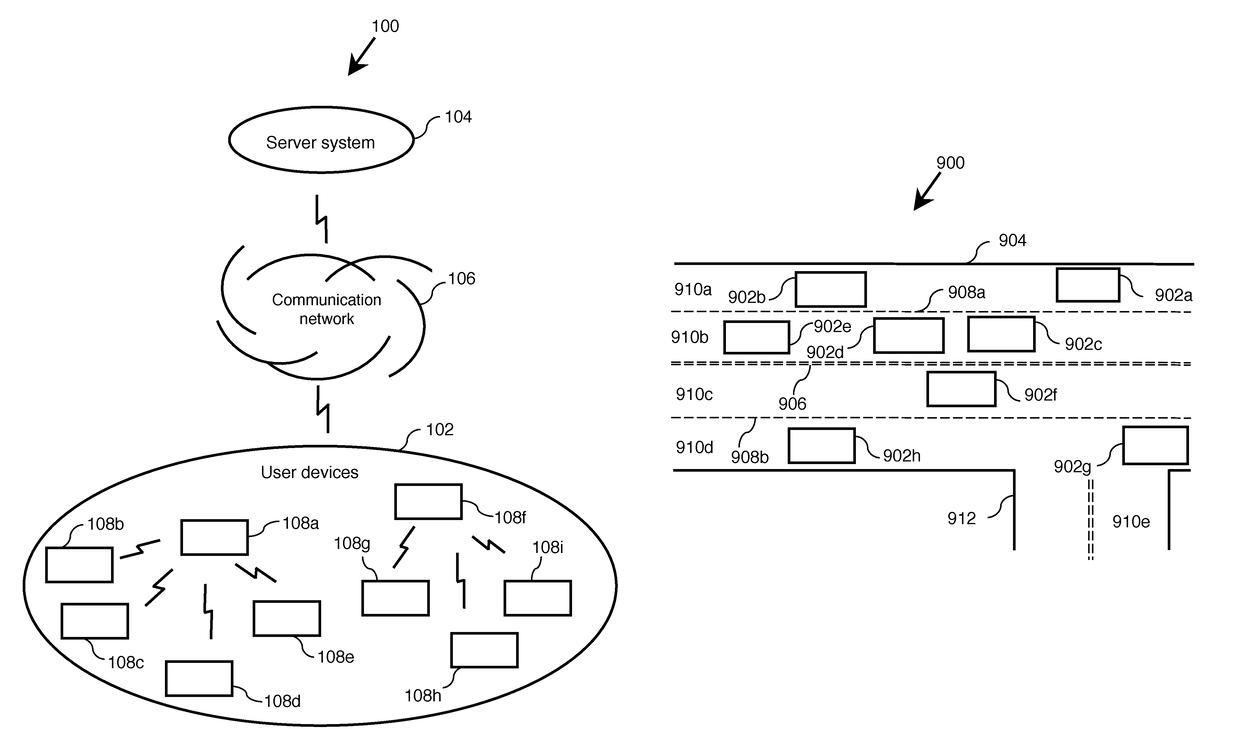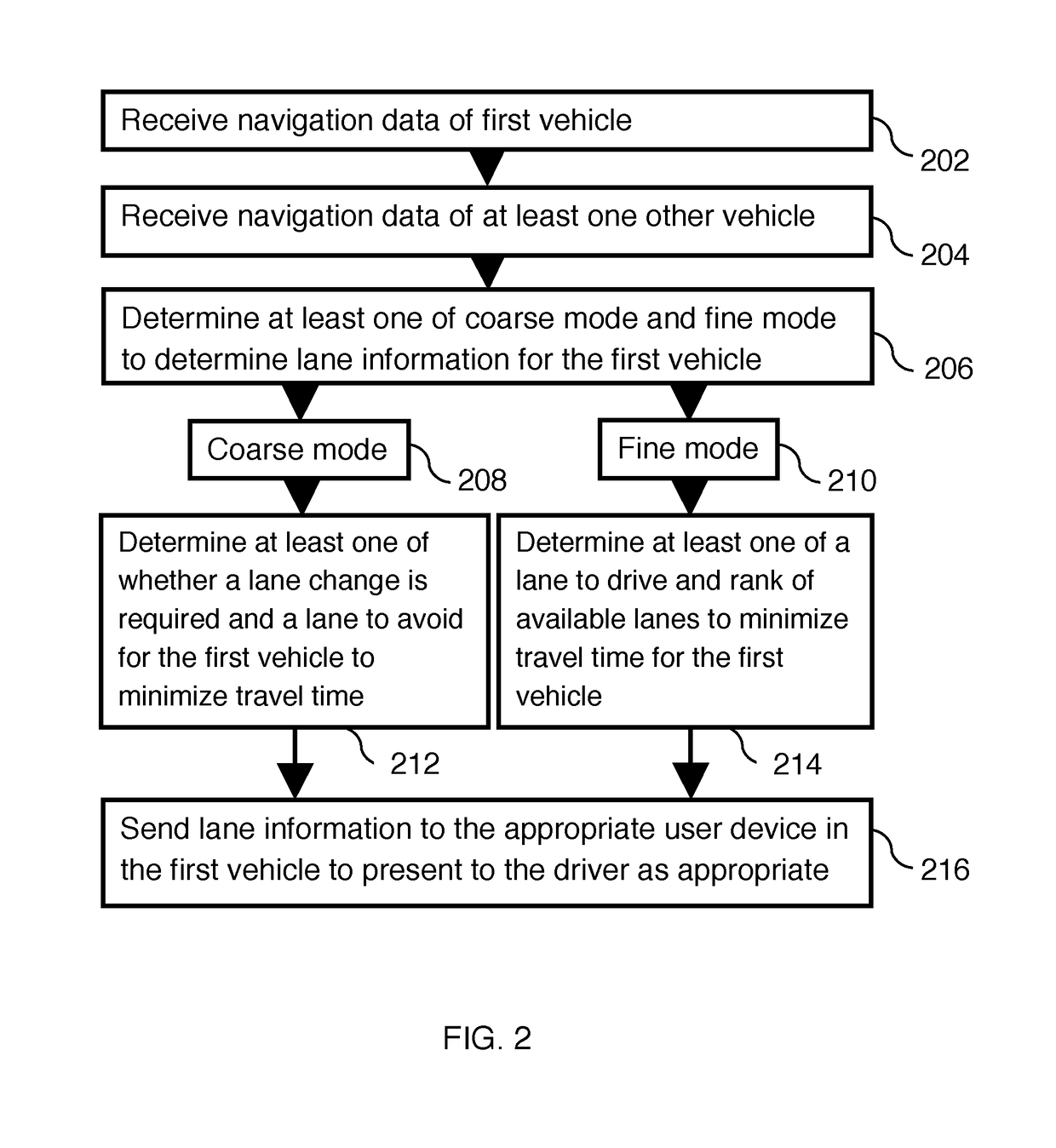Traffic aware lane determination for human driver and autonomous vehicle driving system
a technology of autonomous vehicle and traffic information, which is applied in the direction of traffic control systems, transmissions, vehicle wireless communication services, etc., can solve the problems of increasing traffic congestion in vehicles, slowing down speed, and increasing vehicular queuing, so as to reduce traffic oscillation
- Summary
- Abstract
- Description
- Claims
- Application Information
AI Technical Summary
Benefits of technology
Problems solved by technology
Method used
Image
Examples
Embodiment Construction
[0071]Described herein is a system, method, and computer program for determining lane information in at least one of coarse mode and fine mode to a first vehicle to minimize travel time in a multilane road segment. Throughout the document, several exemplary embodiments are described based on either a method or a system however, one skilled in the art would be able to implement the invention in at least one of method, system, and computer program product.
[0072]In a preferred embodiment of the invention, the method receives navigation data of a first vehicle and at least one other vehicle that is on the same side of road and same road segment as that of the first vehicle. The method performs at least one operation from a list including (a) determine characteristics of navigation of at least one of the first and the other vehicles, (b) receive type of vehicle of at least one of the first and the other vehicles at the server system, and (c) receive current time. In a further step, the m...
PUM
 Login to View More
Login to View More Abstract
Description
Claims
Application Information
 Login to View More
Login to View More - R&D
- Intellectual Property
- Life Sciences
- Materials
- Tech Scout
- Unparalleled Data Quality
- Higher Quality Content
- 60% Fewer Hallucinations
Browse by: Latest US Patents, China's latest patents, Technical Efficacy Thesaurus, Application Domain, Technology Topic, Popular Technical Reports.
© 2025 PatSnap. All rights reserved.Legal|Privacy policy|Modern Slavery Act Transparency Statement|Sitemap|About US| Contact US: help@patsnap.com



